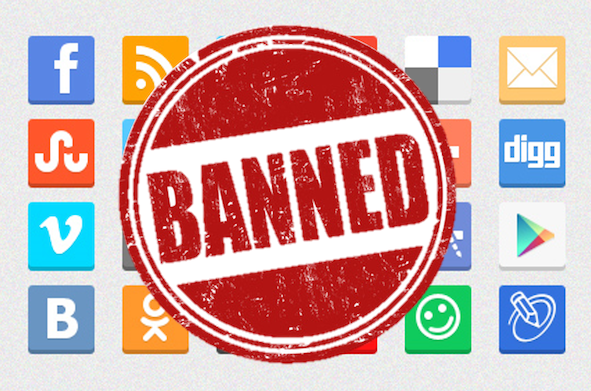
Social media platforms such as Twitter, Facebook, Instagram, YouTube and LinkedIn are seen as double-edged swords by businesses. They can be used as a powerful tool to promote yourself, your business and to deliver great customer services, or they can be a big distraction to people at the office and greatly reduce their level of productivity and cost the company money.
So what do you do with social media? Ban it? Embrace it? Ignore it entirely?
Social Media’s here to stay!
The first thing you need to realize is that social media is everywhere. It is not a “fad” that will die out in a few months and it’s also not only popular with a particular age group, it’s popular with EVERY age group. While social media sites may still be the most popular with younger people, all generations use it at an increasingly larger capacity.
A Pew Research study released in January 2014 found that 74% of Internet users use social media sites. This includes 89% of those between 18-29, but also 65% of people between the ages of 50-64, and that number is growing rapidly.
The popularity of social media means that you as a leader, and your organization as a whole, will need to learn how to deal with it. It cannot be ignored. However, many leaders and companies have difficulty deciding whether to embrace social media as a tool or regulate it (or even ban it) as a costly distraction.
How Social can help?
A case can be made for embracing social media at work. For example, a report from May 2014 found that three in five workers say that social media has resulted in better relationships at work. The report points out how social media can help employees in different areas of the company (and those spread out across different offices) collaborate and stay in touch with one another.
Social media can also be used to communicate with clients, partners and vendors, increasing the personal bonds between these stakeholders and building closer business relationships.
What are the challenges?
However, a case can also be made for viewing social media as a distraction. Consider a 2011 study which found that “Nearly 60% of work interruptions now involve either using tools like email, social networks, text messaging and IM, or switching windows among disparate standalone tools and applications.”
If used incorrectly, social media can be a costly distraction for your company. However, it’s nearly impossible to stop social media usage entirely. Even if you block popular social media platforms on company computers, nearly everyone has a smartphone that they can use to quickly get around this ban.
Even if you can somehow manage to monitor your staff constantly in order to stop them from looking at their phones during work hours (which likely isn’t possible or practical, and a little too dictatorial for my liking) they can still find a way around it. They’ll find a way to distract themselves if they want to be distracted.
What’s the solution?
Motivate and engage your people
As a leader, it’s your responsibly to create a productive environment where people are engaged and motivated to work, not one where they want to spend half of their day looking at pictures of their friends or watching cat videos. By creating a strong work environment and engaging your employees, you can drastically reduce the amount of time they’ll spend distracted by social networks.
Employees are brand ambassadors
Since employees represent the company they work for, they may be expected to maintain a certain kind of public image. Develop a clear and written set of guidelines that employees are expected to respect, and communicate it to them effectively. Be clear of any expectations that the company has on their social media habits, both when it comes to how what they may and may not write about the company, and with regards to their personal brand. Remember, there is a fine line between setting corporate expectations and impeding on one’s freedom of expression. So try not to cross any ethical or legal boundaries when setting your company’s social media governance policies.
Allow for brain breaks
A recent <a style="font-style: inherit" href="http://Evidence shows that the brain cycles from highest attention to lowest attention approximately every 90 minutes. This suggests that you should hit the reset button about that often.